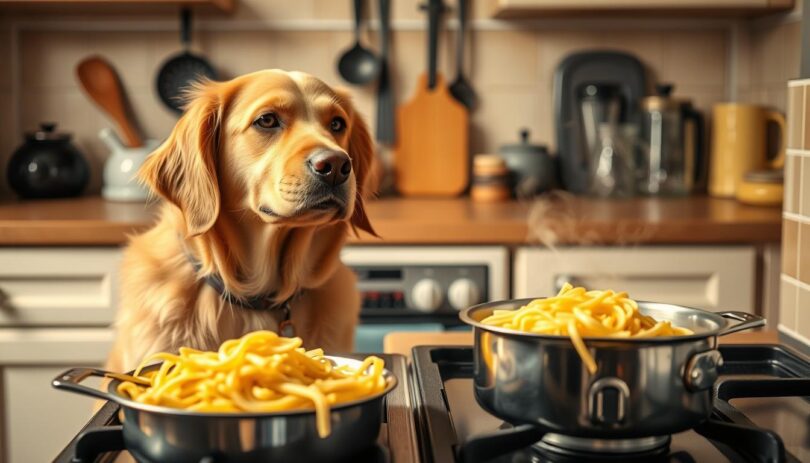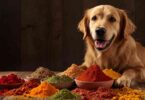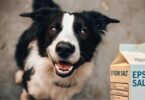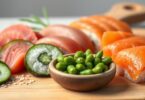Is sharing your spaghetti bowl with a furry companion as harmless as it looks in Lady and the Tramp? Many pet owners wonder whether this beloved human dish belongs in a dog’s diet. While plain noodles aren’t toxic, they offer little nutritional value beyond empty calories.
Common pasta sauces often contain garlic, onions, or excessive salt—ingredients that pose serious health risks. Even small portions might contribute to weight gain, especially since over 25% of pets in the U.S. struggle with obesity. Moderation matters, but so does understanding what makes certain dishes unsafe.
This article explores how occasional plain spaghetti or noodles could fit into balanced feeding routines. It also highlights hidden dangers in sauces, discusses portion control, and suggests healthier alternatives. Veterinary guidance remains essential before introducing new foods—after all, every pup’s needs differ.
By combining practical advice with professional insights, pet lovers can make informed choices. Let’s unravel the myths and facts about this carb-heavy comfort food.
Understanding Pasta and Dogs: Separating Myth from Fact
Many pet lovers assume sharing noodle-based meals aligns with harmless bonding moments. However, the reality requires a closer look at nutritional science and ingredient safety.
What’s Really in Plain Noodles?
Traditional spaghetti consists of refined flour, water, and sometimes eggs. A cup of cooked noodles contains around 200 calories—equivalent to 10% of a 50-pound dog’s daily needs. Whole grain varieties offer more fiber and B vitamins but still lack essential proteins.
Overfeeding carb-heavy foods may lead to weight issues. Studies show 56% of U.S. pets consuming excess carbohydrates develop obesity-related conditions within two years.
When Sauces Turn Dangerous
Garlic and onions—common in marinara—contain compounds that destroy red blood cells in animals. Just half a teaspoon of garlic powder can cause weakness or vomiting. Salt-heavy Alfredo or sugary marinades strain kidneys and promote dehydration.
Veterinarians warn against assuming “natural” labels guarantee safety. Always scrutinize sauce ingredients before sharing leftovers. Opt for plain, unseasoned noodles sparingly—and consult your vet about portion sizes tailored to your pet’s diet.
Can Dogs Eat Pasta?
Feeding pasta to dogs isn’t as simple as twirling a fork—it requires careful preparation and portion discipline. Occasional plain noodles may work as a treat, but risks lurk in sauces and oversized servings.
Safe Serving Tips for Your Pet
Always serve fully cooked noodles without added salt, oil, or seasonings. Opt for whole-grain varieties when possible, as they digest slower and offer more nutrients. Check store-bought options for hidden additives like xylitol or monosodium glutamate.
Avoid sharing dishes inspired by Lady and the Tramp. Tomato-based sauces often contain garlic or onions, which damage red blood cells. Even buttered noodles can upset sensitive stomachs if served in large amounts.
Portion Control and Frequency Recommendations
Limit portions to 1-2 tablespoons for small breeds and ¼ cup for larger pets. Treats like noodles shouldn’t exceed 10% of daily calories. Weekly servings are safer than daily indulgences to prevent weight gain.
Watch for signs of discomfort, such as bloating or lethargy. Consult a veterinarian if unusual symptoms arise, especially for pets with diabetes or grain sensitivities. Pair noodles with lean proteins or vegetables for balanced snacking.
Health Impacts of Pasta on Dogs
While a few plain noodles might seem harmless, frequent pasta consumption can silently affect a pet’s well-being. Three key areas demand attention: nutritional imbalances, allergic responses, and risks for pets with chronic conditions.
Weight Gain and Empty Calorie Concerns
Pasta contains 63% starch—converted to sugar during digestion. This creates energy spikes followed by crashes, encouraging overeating. Just half a cup provides 100 calories, equivalent to 15% of a small dog’s daily needs. Over time, carb-heavy diets contribute to obesity, which 25% of U.S. pets already struggle with.
Allergic Reactions and Digestive Issues
Wheat flour or eggs in noodles may trigger itching, ear infections, or vomiting. Spices like garlic powder—common in sauces—can damage red blood cells. Even small amounts might cause diarrhea or lethargy within hours. Sensitive pets often show symptoms faster than owners expect.
Considerations for Dogs with Special Health Needs
Pets with diabetes face blood sugar instability from starch-heavy meals. Those with heart conditions risk sodium overload from salted noodles. Pancreatitis-prone breeds should avoid fatty pasta dishes entirely. Always discuss dietary changes with a veterinarian—especially when managing chronic issues.
Monitoring portion sizes helps minimize risks, but persistent symptoms like bloating warrant professional guidance. Remember: occasional nibbles won’t derail health, but routine servings often do.
Exploring Healthy Alternatives to Pasta
Pet owners seeking nutritious options beyond noodles have plenty of vet-approved choices. High-quality commercial brands and homemade meals can deliver balanced nutrition without empty carbs. Focus on protein-rich formulas and fiber-packed grains to support vitality.
Nutrient-Rich Dog Food Options
Premium kibble brands like Orijen or Blue Buffalo prioritize real meat, vegetables, and probiotics. Look for formulas listing chicken, salmon, or lamb as the first ingredient. These provide amino acids for muscle health without fillers like corn or soy.
For homemade meals, combine lean ground turkey with brown rice and steamed carrots. This mix offers 30% protein and 15% fiber—far surpassing pasta’s nutritional value. Always introduce new foods gradually to avoid stomach upset.
Easy DIY Treat Recipes for a Balanced Diet
Try this vet-approved recipe: blend cooked quinoa, shredded zucchini, and diced chicken breast. Roll into bite-sized balls and bake at 350°F for 15 minutes. Each treat delivers vitamins B6 and C, plus omega-3s for skin health.
Swap refined grains with barley or oats for sustained energy. These complex carbs digest slowly, preventing blood sugar spikes. Treats should never exceed 10% of daily calories—consult your vet to tailor portions to your pet’s size and activity level.
Final Reflections: Keeping Your Dog Safe & Happy
Balancing treats with nutrition remains vital for your pet’s long-term wellness. Plain noodles or spaghetti occasionally offered in tiny portions might satisfy curiosity without harm—provided they’re sauce-free and unseasoned. Always prioritize quality ingredients over empty calories.
Moderation proves crucial. Regular servings often lead to weight gain or digestive issues, especially for less active pets. Hidden additives in sauces—like garlic or excess salt—can quietly compromise health benefits. Focus instead on vet-approved meals rich in proteins and fiber.
Consulting a veterinarian helps tailor diets to your dog’s unique needs. They’ll clarify portion sizes and suggest wholesome alternatives if noodles become a frequent request. Pair professional guidance with routine health checks to catch potential concerns early.
Confidently navigating these choices strengthens the bond with your furry companion. Share your experiences below—we’d love to hear how you keep meals both safe and enjoyable!
FAQ
Is plain cooked pasta safe for pets?
Plain pasta without sauces or seasonings is generally safe in small amounts. It lacks nutritional value but provides carbohydrates for energy. Always consult a veterinarian before introducing new foods to a pet’s diet.
What ingredients in pasta dishes are harmful?
Garlic, onions, excessive salt, and artificial additives are toxic. Creamy sauces or tomato-based recipes often contain sugars or spices that may cause digestive upset or long-term health issues.
How much pasta can a dog consume without risks?
Portions should not exceed 10% of daily caloric intake. Overfeeding contributes to obesity, especially in breeds prone to weight gain. Moderation is key—limit servings to occasional treats.
Are there healthier substitutes for traditional noodles?
Whole-grain options like brown rice or quinoa offer more fiber. Vegetables such as zucchini or sweet potatoes can be spiralized into low-calorie, nutrient-dense alternatives for pets with dietary restrictions.










Leave a Comment